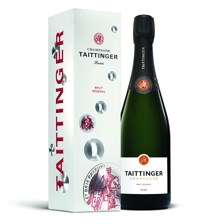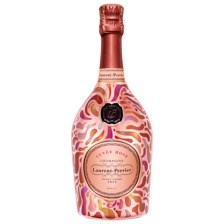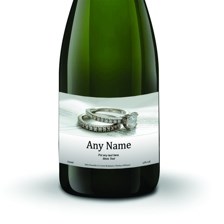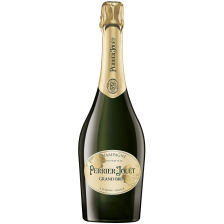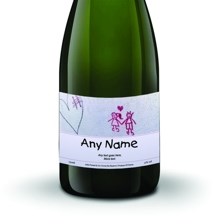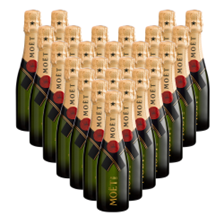A Brief History of Champagne: From Medieval Origins to Modern Bubbles
Champagne’s story weaves together centuries of culture, tradition, and innovation. Long before it became synonymous with celebration, medieval winemakers in and around the Abbeys of Hautvillers, Pierry, Verzy, and Saint-Nicaise were perfecting their craft to meet both sacred and secular demands. Through the efforts of monks, aristocrats, and eventually marketing pioneers, Champagne evolved into the sparkling icon we know today.
Medieval Origins
- Early Winemaking and Church Influence
As far back as medieval times, monastic orders owned vineyards throughout the Champagne region. Monks produced wine primarily for religious ceremonies, most notably the sacrament of the Eucharist. By the 14th century, the region was already recognised for its still wines.
- Royal Connections
French kings were anointed in the Cathedral of Reims, where Champagne was served during coronation festivities. This regal endorsement gave Champagne an early association with luxury and status. In 1114, Bishop William of Champeaux issued the Grande charte champenoise—an early legal framework defining agricultural and viticultural possessions in the region, setting the stage for Champagne’s future development.
The Rise of Still Champagne Wines
- Popularity in the 17th Century
By the 17th century, the still (non-sparkling) wines of Champagne had become a beverage of choice for European royalty. English consumers, in particular, embraced these crisp, light wines.
- Champagne Houses Established
Several historic Champagne houses originated as still wine producers:
- Gosset (1584) – the oldest Champagne house still in operation.
- Ruinart (1729) – first founded specifically for sparkling Champagne.
- Taittinger (1734)
- Moët et Chandon (1743)
- Veuve Clicquot (1772)
As the industrial and transport revolutions advanced, so did the reach of Champagne. By 1850, annual production skyrocketed from 300,000 bottles (around 1800) to 20 million bottles worldwide.
Sparkling Champagne Emerges
- Christopher Merret and Méthode Champenoise
Contrary to legend, the famed Benedictine monk Dom Pérignon did not invent sparkling Champagne. In 1662—six years before Dom Pérignon even arrived at Hautvillers—English scientist Christopher Merret documented the addition of sugar to finished wine to induce a second fermentation in bottle. Although early French attempts at producing sparkling wine were often accidental (bottles exploding or corks popping under fermentation pressure), over time these processes were refined, culminating in what is now known as the méthode champenoise.
- Dom Pérignon’s Contributions
While Dom Pérignon (1638–1715) did not create sparkling wine, he introduced crucial innovations such as using stronger bottles and securing corks with wire collars to withstand internal pressure. Early sparkling Champagne was famously nicknamed “the devil’s wine” (le vin du diable) due to its tendency to cause bottle explosions.
- Commercial Production
The official switch from still wine to deliberately produced sparkling Champagne occurred gradually, especially in the 19th century, centuries after Merret’s paper described the process of secondary fermentation.
Associations with Nobility and Luxury
- Royal Endorsements
Champagne’s global fame flourished due to its connection with French coronations. European royalty and nobility adopted it as a preferred gift and celebratory drink, linking Champagne to luxury and power.
- Marketing Triumphs
Champagne houses capitalised on these regal ties. Through branding, packaging, and endorsements, they created an aura of sophistication. One of the most notable marketing successes came in 1866, when performer George Leybourne exclusively promoted and drank Champagne in public, cementing its image as a mark of wealth and refinement.
The Shift to Brut Champagne
- 19th-Century Sweetness
Historically, Champagne was much sweeter than the versions we enjoy today. This started to change when Perrier-Jouët exported an 1846 vintage to London without adding the usual sugar.
- Brut Style for the British Palate
In 1876, the Brut style was officially created to cater to British tastes, ushering in the era of drier Champagnes that dominate the modern market.
A Lasting Legacy
From its monastic and royal beginnings to breakthroughs in secondary fermentation and brilliant marketing strategies, Champagne’s heritage is a testament to centuries of craftsmanship, adaptation, and storytelling. The notion of celebration and indulgence that Champagne evokes—once reserved for French monarchs—now resonates worldwide, ensuring that every cork popped carries forward a piece of this illustrious history.
Wines from the Champagne region were known before medieval times. Churches owned vineyards and monks produced wine for use in the sacrament of Eucharist. French kings were traditionally anointed in Reims and champagne wine was served as part of coronation festivities. In 1114, William of Champeaux, bishop of Chalons-en-Champagne,
